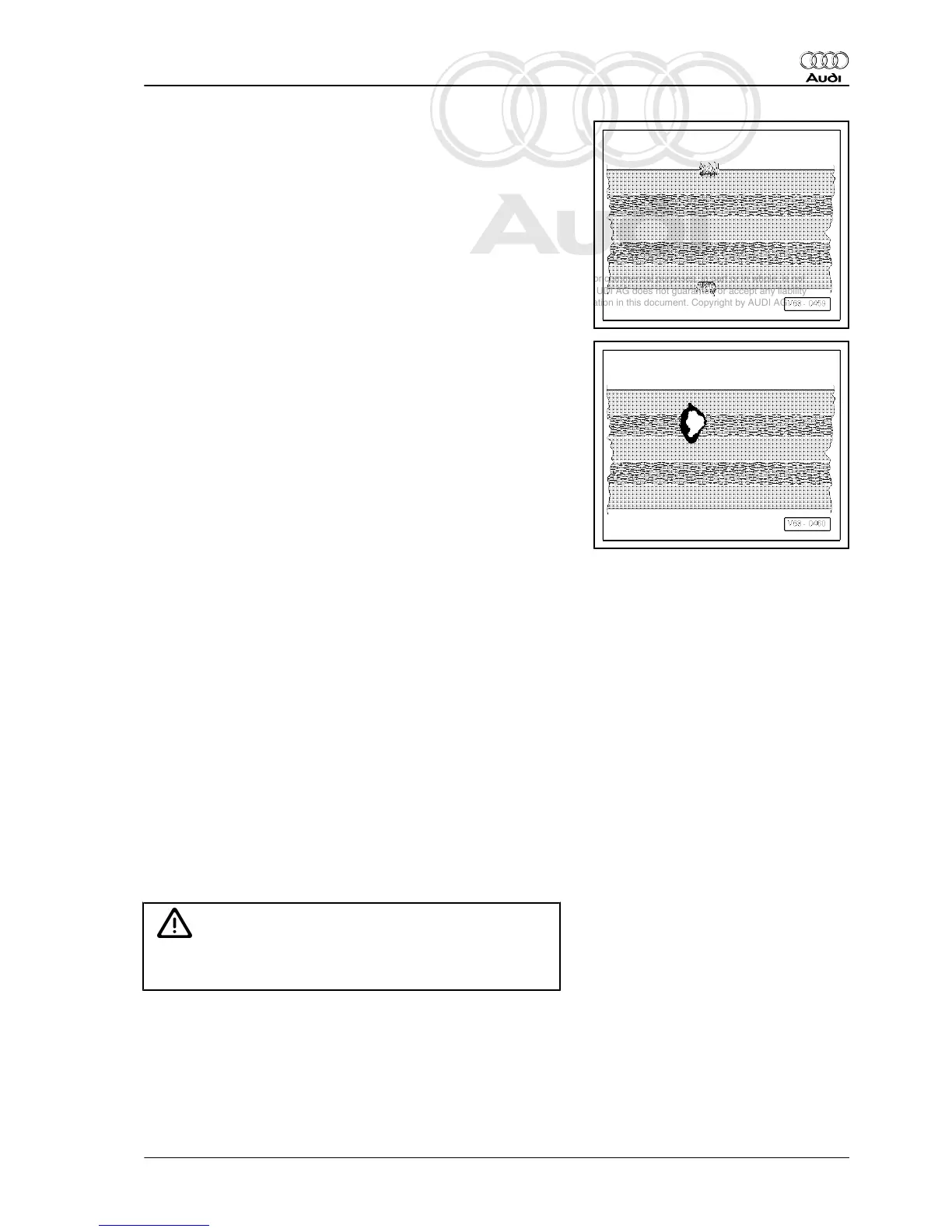• If either of the following illustrated examples of damage (1 and
2) is found on a crash vehicle, replace the seat belt complete
with the buckle.
• If damage as illustrated under points 1, 2 or 3 is determined
on a vehicle which has not been involved in an accident, it is
sufficient to replace the damaged belt only.
• 1 - Webbing cut, torn or chafed
• 2 - Frayed fabric at edge of belt
• 3 - Burn marks caused by cigarettes or the like
1.13 Checking automatic belt retractor (lock‐
ing action)
The automatic belt retractor has two locking functions.
♦ The first locking function is triggered by pulling the belt quickly
out of the automatic belt retractor (accelerated belt unwind‐
ing).
Check 1
– Tug the webbing firmly to pull it out of the automatic belt re‐
tractor.
• No locking effect - replace seat belt complete with buckle.
• In the event of problems when pulling out or retracting the belt,
start by checking whether the automatic belt retractor has
changed position.
• The second locking function is triggered by altering vehicle
motion (vehicle-dependent locking function).
Check 2
WARNING
For safety reasons, the test drive should be performed on a
road with no traffic so as not to endanger other road users.
– Fasten seat belt.
– Accelerate the vehicle to 20 km/h and then press the foot brake
to implement emergency braking.
• If the belt is not locked by the locking mechanism on braking,
replace the seat belt complete with the buckle.
Audi A8 2003 ➤
General body repairs, interior - Edition 07.2011
1. Safety regulations and test methods for pyrotechnic, electrical and mechanical components of the restraint system 103

